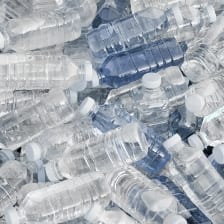What is the difference between spring water and purified water, and which one is best for your family?
The origin and processing methods used to make bottled water vary greatly from one brand to another, thereby making them taste different, and each person has their own preference. However, the U.S. Food and Drug Administration (FDA) have established regulations and guidelines known as “standards of identity” that help consumers determine which bottled water to buy.
The FDA bottled water classifications:
Spring water – In order to qualify as “spring water” under FDA guidelines, bottled water must be “derived from an underground formation from which water flows naturally to the surface of the earth.” Additionally, it must be collected only at the spring through a borehole that taps the underground formation. If at any point in the collection process an external force is used, the water must be derived from the same stratum as the spring and retail all of physical properties of naturally flowing spring water.
Purified water – Bottled drinking water is labeled as “purified drinking water” when it is treated with such process as deionization, distillation or reverse osmosis. Basically, these terms just mean that any bacteria or dissolved solids have been thoroughly removed, thereby making the water purified. Many of the most popular bottled waters are actually purified drinking water.
Mineral water – While less popular in the United States than in Europe, mineral water still enjoys a widespread “cult following” among bottled water drinkers. It contains less than 250 parts-per-million of dissolved solids and it is defined by its consistent level of minerals and trace elements. Sparkly and slightly carbonated, mineral water is known for its refreshing quality, but these elements are already in place at the point where water emerges from the spring. They cannot be added to the water later.
Sparkling bottled water – This fizzy water may look a lot like club soda, but it is naturally carbonated. In fact, sparking spring water has the same amount of carbon dioxide as when it emerged from the source.
Why does the FDA get involved with bottled water?
The FDA regulates bottled water so that consumers know exactly what they’re getting. Not everyone takes the time to read the bottle, but the FDA’s safety standards indicate that water companies must provide detailed information about their product. Surprisingly, bottled water is one of the most extensively regulated packaged-food products. It receives government oversight from both federal and state agencies, thereby providing consumers with a few layers of safety assurance. Rather than simply asking for a scientific breakdown of its contents, the FDA traces each company’s finished water product back to the source.
Bottled water is required to be tested for the same parameters as tap water. However, in some cases the standards are stricter than for tap water. State governments inspect and certify the “sources” of spring water, meaning that samples have been analyzed and found to be of a safe and sanitary quality according to regulation.
The Clearly Colorado Difference
In case you’re wondering where your bottled water falls on the quality scale, you can find out quickly by reading the label. At Clearly Colorado, for example, their “Point-of-Entry” purification system purifies and oxygenates the drinking water, and subjects it to rigorous testing by independent laboratories. Using their own standards in addition to the FDA’s, their water exceeds the standards set by the U.S. Food and Drug Administration. In addition, the bottled water from Clearly Colorado is compliant with the purity standards of the International Bottled Water Association and the World Health Organization.
Next time you open a bottle of water, take a look at the label and learn a little more about the company’s purification methods. It may surprise you how much of a difference these details make in the taste and quality of drinking water.
Photo Courtesy of Keattikorn / FreeDigitalPhotos.net





